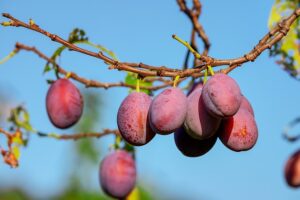Discover the secrets to perfect fruit tree pruning year-round, from winter dormancy to summer vitality. Our comprehensive guide on when to prune fruit trees covers the best practices and timing for apple, pear, peach, nectarine, cherry, and apricot trees, ensuring your garden thrives.
Introduction
Pruning is a crucial practice for maintaining the health and productivity of fruit trees. Whether you’re a seasoned gardener or a homeowner with a blossoming interest in plant care, understanding when to prune your fruit trees can make all the difference. In this comprehensive guide, we’ll walk you through the best times to prune different types of fruit trees and provide practical tips to ensure your trees thrive throughout the year.
Winter Pruning
Explanation of Dormant Pruning
Winter pruning, also known as dormant pruning, occurs when trees are in their inactive phase. This period typically falls between late fall and early spring, depending on your climate zone. During dormancy, the tree’s energy is concentrated in its roots, making it an ideal time to prune without causing undue stress.
Benefits of Winter Pruning
- Improved Tree Structure: Pruning in winter helps shape the tree by removing unwanted branches, promoting a strong framework.
- Disease Control: Winter pruning reduces the risk of disease spread, as many pathogens are less active in cold temperatures.
- Increased Light Penetration: Removing excess branches allows sunlight to reach the inner parts of the tree, crucial for fruit development.
Best Practices for Winter Pruning
- Use Sharp Tools: Ensure your pruning tools are sharp to make clean cuts, reducing the risk of disease.
- Remove Dead and Diseased Wood: Focus on eliminating dead, damaged, or diseased branches first.
- Avoid Over-Pruning: Stick to removing no more than 20-30% of the tree’s canopy to avoid stress.
Types of Fruit Trees Recommended for Winter Pruning
- Apple Trees
- Pear Trees
- Quince Trees
Spring Pruning
Explanation of Spring Pruning
Spring pruning usually takes place just before or during the early growing season. This method is particularly beneficial for trees that bloom on new wood.
Benefits of Spring Pruning
- Enhanced Growth: Pruning in spring encourages new growth, which is vital for fruit production.
- Disease Management: Removing damaged or diseased branches early prevents problems from spreading as the tree grows.
Best Practices for Spring Pruning
- Wait for Frost to Pass: Ensure the last frost has passed to avoid damage to new growth.
- Thin Out Crowded Branches: Focus on thinning out overcrowded areas to promote healthy air circulation.
- Cut Back to Healthy Wood: Always prune back to healthy wood to encourage vigorous growth.
Types of Fruit Trees Recommended for Spring Pruning
- Peach Trees
- Nectarine Trees
- Plum Trees
Summer Pruning
Explanation of Summer Pruning
Summer pruning typically involves trimming trees during their active growing season, usually between late May and early August.
Benefits of Summer Pruning
- Size Control: Pruning in summer helps control the size of the tree, making it easier to manage and harvest.
- Sunlight Exposure: By reducing the tree’s foliage, more sunlight reaches the remaining leaves and fruit, enhancing ripening.
- Immediate Feedback: Summer pruning allows you to see the immediate impact on tree growth and adjust as needed.
Best Practices for Summer Pruning
- Prune on a Dry Day: Choose a dry day to minimize the risk of disease entering fresh cuts.
- Focus on Water Sprouts: Remove water sprouts and suckers to direct the tree’s energy towards fruiting branches.
- Avoid Over-Pruning: Limit summer pruning to light trimming to avoid stressing the tree.
Types of Fruit Trees Recommended for Summer Pruning
- Cherry Trees
- Apricot Trees
- Olive Trees
Post-Harvest Pruning
Explanation of Post-Harvest Pruning
Post-harvest pruning occurs after the fruit has been harvested and the tree is preparing for dormancy again. This is an excellent time to clean up the tree and prepare it for the next growing season.
Benefits of Post-Harvest Pruning
- Preparation for Dormancy: Helps the tree prepare for its dormant period by removing unnecessary branches.
- Disease Prevention: Pruning after harvest helps manage diseases and pests that could overwinter in the tree.
- Boosts Next Season’s Yield: Encourages healthy growth for the next fruiting season.
Best Practices for Post-Harvest Pruning
- Inspect for Pests: Check for and remove any branches showing signs of pests or disease.
- Balance the Canopy: Maintain a balanced canopy to ensure even growth and fruit production next season.
- Clean Tools: Always clean and disinfect pruning tools between trees to prevent disease spread.
Types of Fruit Trees Recommended for Post-Harvest Pruning
- Persimmon Trees
- Fig Trees
- Pomegranate Trees
Tools and Techniques
Essential Pruning Tools
- Pruning Shears: For small branches and precise cuts.
- Loppers: For medium-sized branches.
- Pruning Saw: For larger branches that shears and loppers can’t handle.
- Pole Pruner: For high branches out of reach.
Proper Techniques for Effective Pruning
- Make Clean Cuts: Ensure cuts are clean and smooth to promote faster healing.
- Angled Cuts: Make cuts at a slight angle to allow water runoff, preventing rot.
- Prune Close to the Branch Collar: Avoid leaving stubs, as this can invite disease.
Safety Tips for Pruning
- Wear Protective Gear: Gloves, safety glasses, and long sleeves protect against cuts and scratches.
- Use a Ladder Safely: Ensure your ladder is stable and never overreach.
- Stay Aware of Surroundings: Be mindful of power lines and other obstacles.
Conclusion
Pruning is an essential practice for maintaining the health and productivity of fruit trees year-round. By understanding the optimal times for winter, spring, summer, and post-harvest pruning, you can ensure your trees remain healthy and productive. Remember to use the right tools and techniques to make the most of your pruning efforts. Happy gardening!

